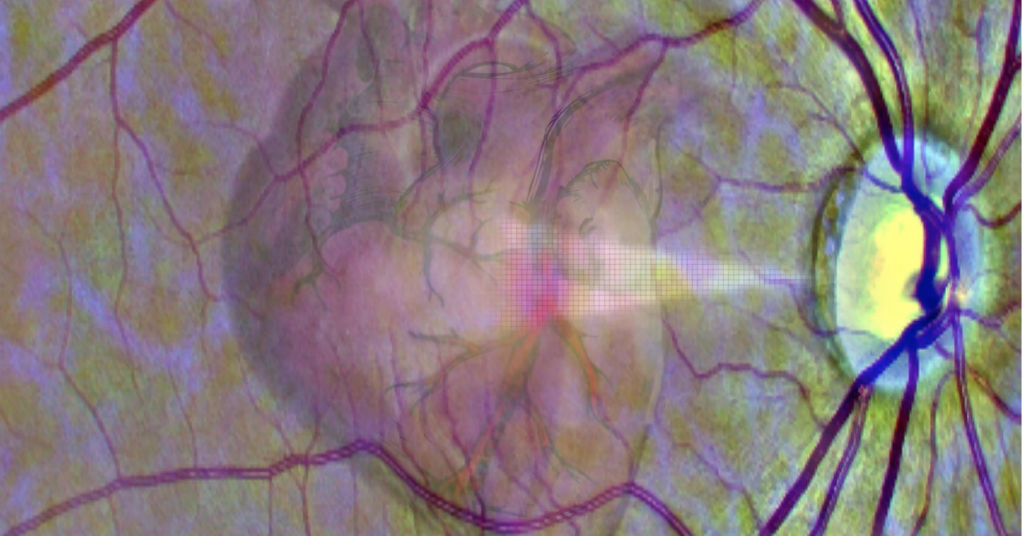
Close up of the interior of an eye done by an opthalmological scan. (Source: University of Leeds)
AI Looks for Heart Problems from Scans Done during Routine Eye Check-ups
One person dies every 36 seconds in the United States from cardiovascular disease. About 659,000 people in the United States die from heart disease each year—that’s 1 in every 4 deaths. Those are the numbers from September of 2021. Further, there are around 28 million people in the US with heart disease according to statistics. Every year, 805,000 Americans have a heart attack, 605,000 of them for the first time. If you have a heart you are at risk like everyone else, no matter how well you treat that heart.
So when AI is part of a new detection system that can predict the probability of a heart attack simply by looking at a person’s eye scan, you can bet lots of folks were interested.
A new piece from Scitechdaily.com brings great news regarding heart disease and its early detection.
Scientists have developed an artificial intelligence (AI) system that can analyze eye scans taken during a routine visit to an optician or eye clinic and identify patients at a high risk of a heart attack.
Doctors have recognized that changes to the tiny blood vessels in the retina are indicators of broader vascular disease, including problems with the heart.
In the research, led by the University of Leeds, deep learning techniques were used to train the AI system to automatically read retinal scans and identify those people who, over the following year, were likely to have a heart attack.
Professor Alex Frangi, who holds the Diamond Jubilee Chair in Computational Medicine at the University of Leeds and is a Turing Fellow at the Alan Turing Institute, supervised the research.
“This technique opens-up the possibility of revolutionizing the screening of cardiac disease. Retinal scans are comparatively cheap and routinely used in many optician practices. As a result of automated screening, patients who are at high risk of becoming ill could be referred to specialist cardiac services.
“The scans could also be used to track the early signs of heart disease.”
The UK Biobank provided data for the study. This breakthrough didn’t come from just a couple of programmers in the office.
This effort was a worldwide gathering of scientists, opticians, heart disease specialists, and more from the University of Leeds; Leeds Teaching Hospitals NHS Trust; the University of York; the Cixi Institute of Biomedical Imaging in Ningbo, part of the Chinese Academy of Sciences; the University of Cote d’Azur, France; the National Centre for Biotechnology Information and the National Eye Institute, both part of the National Institutes for Health in the US; and KU Leuven in Belgium.
That’s a pretty prestigious group of people who by integrating AI with the other professions and came up with a completely amazing and brand-new medical tool.
The AI can scan the optic images, and by measuring the size of various arteries it can tell if one side of the heart is pumping properly or if it isn’t. It has 70% to 80% accuracy — and can predict if patients are at risk of a heart attack over the next year.
There is hardly a day that goes by anymore where AI isn’t used in tackling a medical problem and coming up with a new and better answer to old questions.
read more at scitechdaily.com







Leave A Comment